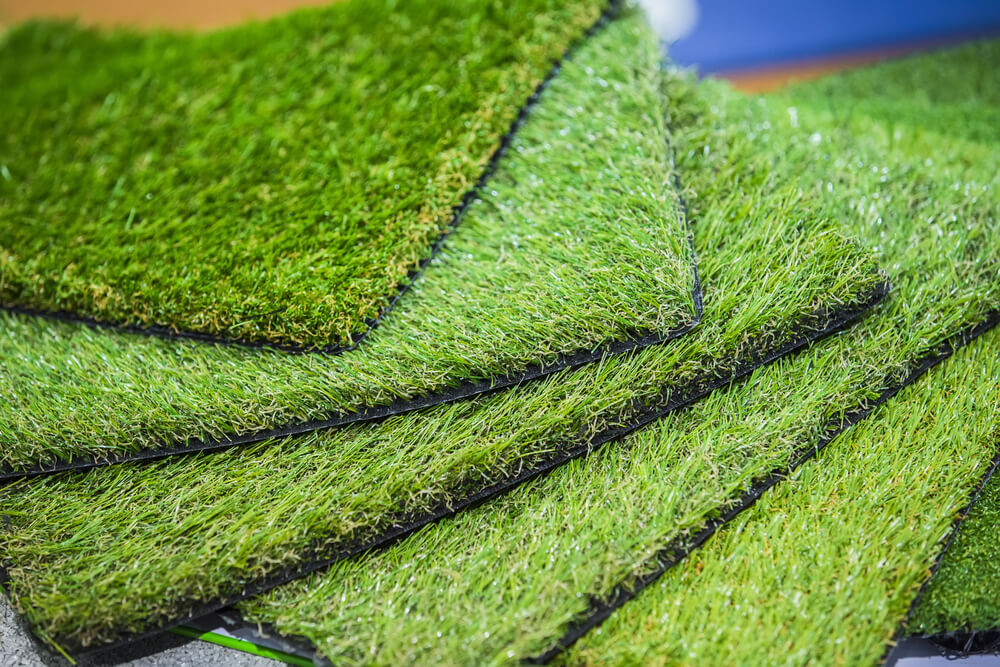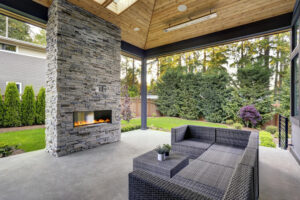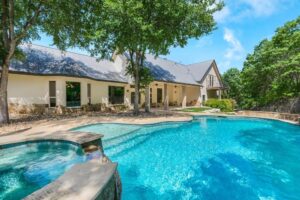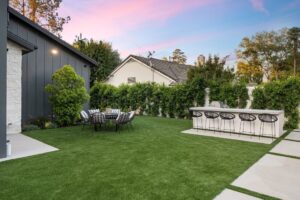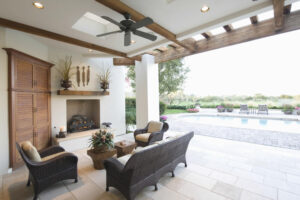Artificial turf has become a popular choice for homeowners and businesses looking to maintain a lush, green lawn with minimal maintenance. However, like any outdoor surface, artificial turf isn’t immune to wear and tear over time. In this comprehensive guide, the team at Cricket Pavers, experts when it comes to artificial grass installation, will delve into the signs that indicate when artificial turf needs to be replaced, offering valuable insights into artificial turf maintenance and replacement strategies.
The Lifespan of Artificial Turf
Understanding the expected lifespan of artificial turf is crucial in determining when replacement may be necessary. High-quality artificial turf can last anywhere from 15 to 25 years, depending on factors such as the type of turf, installation quality, and the level of foot traffic it endures.
Regular Artificial Turf Maintenance
To extend the life of your artificial turf, regular maintenance is essential. Implementing a consistent maintenance routine helps prevent common issues and ensures the longevity of your synthetic lawn. Key maintenance tasks include:
Regular brushing: Use a stiff brush or broom to keep the turf fibers upright and evenly distribute infill materials. This prevents matting and maintains the natural appearance of the grass.
Removing debris: Clear leaves, twigs, and other debris from the turf regularly to prevent drainage issues and the development of mold or mildew.
Infrequent deep cleaning: Perform a deep cleaning at least once a year to remove accumulated dirt, dust, and contaminants. Use a mild detergent and water solution or a specialized artificial turf cleaner.
Checking infill levels: Ensure that the infill material is evenly distributed and at the appropriate level. This helps maintain proper drainage and provides stability to the turf.
Signs of Artificial Turf Wear and Tear
Despite regular maintenance, artificial turf may eventually show signs of wear and damage. Recognizing these signs is crucial in determining when replacement is necessary:
Matting and Flattening: Over time, artificial turf fibers may begin to mat and flatten, especially in high-traffic areas. Excessive matting compromises the aesthetics and functionality of the turf.
Fading: Prolonged exposure to sunlight can lead to fading, causing the vibrant green color of the turf to diminish. Faded artificial turf not only looks worn but may also indicate a decrease in UV resistance.
Stains and Discoloration: Stubborn stains and discoloration can result from various sources, such as pet waste, chemicals, or mold. While regular cleaning can address some stains, persistent discoloration may signal irreparable damage.
Visible Tears or Rips: If you notice visible tears, rips, or damage to the turf surface that cannot be repaired, it may be time to consider replacement. Damaged turf compromises both the aesthetics and functionality of the lawn.
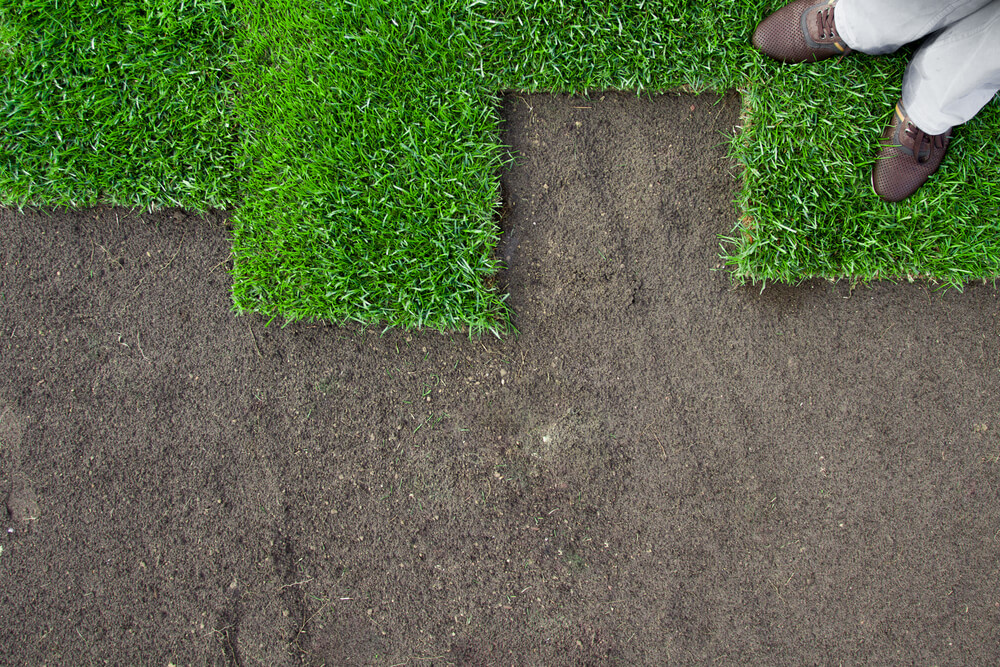
Assessing Artificial Turf Infill
The infill material within artificial turf is a vital component that significantly contributes to the overall performance, resilience, and longevity of the synthetic lawn. As an integral part of the turf system, the infill serves multiple purposes, including providing stability, enhancing shock absorption, and ensuring the turf fibers remain upright. However, over time, the infill can undergo changes that may compromise its effectiveness, warranting a careful assessment to determine the need for replacement.
Structural Support: The infill material acts as a foundational support system for the turf fibers, preventing them from matting and ensuring a consistent and realistic appearance. As the infill degrades or becomes compacted over time, its ability to maintain this structural support diminishes. If you notice areas where the turf appears flattened or lacks the usual resilience, it may be indicative of insufficient infill support.
Drainage Issues: Proper drainage is crucial for the overall health and functionality of artificial turf. The infill helps create a permeable surface that allows water to drain efficiently through the turf system. If the infill becomes compacted or breaks down, it can impede drainage, leading to water pooling on the surface. Poor drainage not only affects the aesthetics of the turf but also creates an environment conducive to mold, mildew, and other issues that can accelerate deterioration.
Uneven Infill Distribution: A consistent and even distribution of infill across the entire surface is essential for maintaining the uniform appearance and performance of artificial turf. Signs of uneven infill distribution, such as bare patches or areas with excessive infill buildup, can indicate areas of potential concern. Uneven distribution may lead to inconsistent turf characteristics, affecting playability and the turf’s visual appeal.
Compaction and Settling: Over time, infill materials may experience compaction due to foot traffic, weather conditions, or other external factors. Compacted infill loses its ability to provide adequate cushioning and support for the turf fibers. If you observe areas where the turf feels excessively hard or compacted, it’s an indication that the infill may need attention.
Visible Signs of Wear: Regular visual inspections of the artificial turf can reveal signs of infill degradation. If the infill particles appear worn, crushed, or discolored, it suggests that the material may have reached the end of its functional life. These visible signs often coincide with a decrease in the infill’s ability to fulfill its intended roles within the turf system.
Factors Influencing Replacement
Several factors can influence the decision to replace artificial turf:
Usage Patterns: Heavy foot traffic, sports activities, or frequent events on the turf can accelerate wear and tear, necessitating replacement sooner.
Climate Conditions: Harsh weather conditions, extreme temperatures, and prolonged exposure to sunlight can impact the longevity of artificial turf.
Quality of Installation: A poorly installed artificial turf may develop issues sooner. Ensuring proper installation by qualified professionals is essential for maximizing its lifespan.
Maintenance Practices: Neglecting regular maintenance can significantly impact the lifespan of artificial turf. Failure to brush, clean, and address issues promptly may contribute to accelerated wear and reduce the overall longevity of the turf.
Pet Activity: If your artificial turf is frequently used by pets, especially for activities like digging or rough play, it may experience quicker wear and tear. Pet waste can also lead to staining and unpleasant odors, influencing the decision to replace the turf.
Inadequate Drainage: Poor drainage can result in water pooling on the turf, leading to various issues such as mold, mildew, and a weakened base. Inadequate drainage can accelerate the breakdown of infill and contribute to turf deterioration.
Infill Quality: The type and quality of infill used in artificial turf play a crucial role in its performance and longevity. Low-quality infill materials may break down faster, impacting the turf’s ability to provide support and maintain its appearance.
Artificial Grass Removal and Replacement Process
When it’s time to replace your artificial turf, the removal and replacement process should be handled carefully to ensure a smooth transition. Steps in this process include:
Turf Removal: Remove the old turf, infill, and base materials carefully, minimizing damage to the underlying surface.
Surface Inspection: Inspect the base for any issues, such as drainage problems or uneven surfaces, and address them before installing new turf.
Installation of New Turf: Ensure the new artificial turf is installed following best practices, including proper infill distribution and secure anchoring.
Seam Integration: Pay special attention to the integration of seams when installing the new turf. Ensure that the seams are carefully joined and securely fastened to prevent separation over time. Proper seam integration contributes to a seamless and natural appearance of the artificial grass.
Infill Compaction:> Once the infill is distributed across the new turf, use a power broom or a weighted roller to compact the infill. Compaction ensures that the infill settles evenly, providing adequate support to the turf fibers and contributing to a consistent and attractive surface.
Final Inspection: Conduct a thorough inspection to ensure the replacement turf is installed correctly and meets quality standards.
Finishing Thoughts
Artificial turf offers a low-maintenance alternative to natural grass, but it’s essential to be aware of signs that indicate when replacement is necessary. Regular artificial turf maintenance, coupled with a vigilant eye for wear and tear, ensures that your synthetic lawn remains vibrant and functional for years to come. By understanding the factors influencing replacement and following proper removal and replacement procedures, you can enjoy a lush and resilient artificial turf surface that enhances your outdoor space.
